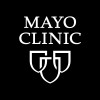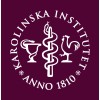
Autoimmune Intervention Mastery Course Study
Multiple SclerosisClinically Isolated Syndrome2 moreThe goal of this project is to critically evaluate the effectiveness of using an online program to improve diet and self-care in patients with multiple sclerosis (MS), clinically isolated syndrome (CIS), fibromyalgia, and post acute sequela of covid

Magnetic Resonance Elastography of Myofascial Pain Syndrome
Myofascial PainThe purpose of this research study is to use a new imaging technique called Magnetic Resonance (MR) Elastography to create new imaging parameters to measure the mechanical properties of myofascial tissues that can be used to assess the impaired myofascial interface in myofascial pain syndrome (MPS).

Fibromyalgia Integrative Training for Adolescents With Juvenile Fibromyalgia
FibromyalgiaMyofascial Pain Syndrome3 moreThis study evaluates whether Fibromyalgia Integrative Training program for Teens (FIT Teens), a combined cognitive behavioral therapy and neuromuscular exercise training program is more effective in reducing disability in adolescents with Juvenile Fibromyalgia compared to cognitive behavioral therapy (CBT) alone or a graded aerobic exercise (GAE) program alone. One third of participants will receive the FIT Teens training; one third will receive CBT training; and one third of participants will receive the GAE training.

Exposure-based Cognitive Behavior Therapy vs Traditional Cognitive Behavior Therapy for Fibromyalgia...
FibromyalgiaFibromyalgia (FM) is a common medical condition characterized by chronic generalized musculoskeletal pain, fatigue, and a series of additional somatic and psychiatric problems that give rise to distress, functional impairment, and substantial societal costs. The most extensively evaluated treatment for FM is traditional cognitive behavior therapy (T-CBT) which typically appears to have small to moderate effects when compared to waitlist, attention control, treatment as usual or other active nonpharmacological therapies. Internet-delivered exposure-based cognitive behavior therapy (Exp-CBT) where the patient willingly and systematically engages with stimuli associated with pain and pain-related distress has shown promising controlled effects versus a waiting-list but has never been compared to T-CBT in a randomized controlled trial. In this randomized controlled trial, self-recruited adults with FM (N=260) are randomly assigned (1:1) to 10 weeks of internet-delivered Exp-CBT or internet-delivered T-CBT and complete self-report questionnaires to measure symptoms and therapeutic processes up to 12 months after treatment. Primary outcome is the relative effect of Exp-CBT and T-CBT on FM severity as modelled using linear mixed models fitted on weekly Fibromyalgia Impact Questionnaire sum scores over the treatment period, testing the hypothesis of Exp-CBT superiority based on the coefficient for the time × group interaction. The investigators will also calculate the number of treatment completers in each treatment condition, defined as having commenced module five out of eight treatment modules. Cost-effectiveness and mediational processes are investigated in secondary analyses. The investigators expect this trial to be of notable clinical significance as it will provide valuable information about the value of Exp-CBT in helping patients with FM as compared to using other interventions.

Randomized Controlled Trial of CES for Fibromyalgia
FibromyalgiaGiven recent increasing opioid-related deaths and evidence showing against the use of opioids for non-malignant chronic pain, there is growing need for non-narcotic pain management. Fibromyalgia is a difficult to treat chronic pain condition that is often treated with opioids despite existing evidence. The prevalence of fibromyalgia is increased among Veterans returning from the gulf war and is already a significant burden in senior Veterans who may have suffered with chronic pain for decades already. Many treatment options for fibromyalgia carry intolerable side effects. CES (Cranial Electrical Stimulation) is a FDA-approved, non-pharmacologic therapy that is currently utilized within the military and VA system, but sufficient evidence regarding its outcomes and neural mechanisms have not been adequately investigated. An understanding of its neural underpinnings and analgesic effects could lead to 1) improvements in pain management and quality of life, 2) cost-savings and 3) development of new techniques to address pain.

The Effects of Dietary Changes on Gut-bacteria and Fibromyalgia Symptoms
FibromyalgiaDiet1 moreThe purpose of this study is to evaluate the efficacy of two diets - gluten-free and low-FODMAP diet- in relieving symptoms of fibromyalgia, and study whether these changes could be associated with changes in the gut microbiome (gut bacteria).

Effectiveness of Strength Training Versus Flexibility Training in Patients With Fibromyalgia
FibromyalgiaFibromyalgia is a rare musculoskeletal condition worldwide.This condition has a significant impact on the person's quality of life by affecting their various activities of daily living. It is a chronic illness characterized by persistent and widespread non-inflammmtory musculoskeletal pain. Various management strategies including both pharmacological and non-pharmacological are used for the treatment of fibromyalgia. In the recent years strength training and flexibility training are being used for the treatment of fibromyalgia. Strength training is used to improve muscle strength, endurance , power or a combination of both, whereas flexibility training is used to improve ability of a joint to maintain the movement. Different studies have shown postive results of strength training and flexibility training in patients with fibromyalgia. However no such study has investigated the combined effects of both theses techniques. So this study aims to investigate the effect of strength training and flexibility training according to the guidelines of FITT protocol.

iTBS-DCS in Fibromyalgia
FibromyalgiaBackground & Rationale: Fibromyalgia is characterized by widespread pain, fatigue, mood and anxiety as well as cognitive complaints. For an unacceptable proportion of patients, depressive symptoms remain impairing despite multiple treatments. For such patients, novel treatments include non-invasive brain stimulation. Transcranial Magnetic Stimulation (TMS) targeting the dorsolateral prefrontal cortex (DLPFC) or the primary motor cortex (M1) is the non-invasive neurostimulation method with the largest evidence base in fibromyalgia. It involves generating magnetic fields outside of the body to change the firing of neurons in the brain, and has a very favorable tolerability profile. Recent meta-analyses indicate that both the DLPFC and M1 targets are associated with improvements in pain, mood and anxiety, however the benefits are more persistent when the DLPFC is targeted (Su et al, 2021 - J Clin Med). The DLPFC is important in fibromyalgia through its implication in several symptoms domains in fibromyalgia, as well as pain catastrophization. The researchers neurophysiological data and clinical data in depression suggests that the researchers can enhance the effects of TMS by using an adjunctive medication called D-Cycloserine (DCS, 100mg) in conjunction with a protocol called intermittent theta-burst stimulation (iTBS). Specifically, this data indicated that several converging features of fibromyalgia improve with augmented iTBS, specifically depressive symptoms, anxiety symptoms, fatigue, and cognitive function. The researchers therefore hypothesize that the combination of D-cycloserine and TMS will lead to greater improvements in fibromyalgia symptoms than TMS alone. Although iTBS has not yet been studied in fibromyalgia, it has a well characterized neurophysiological effect and been shown to be non-inferior to conventional TMS protocols in conditions such as depression. More importantly, its physiological basis can be manipulated with D-Cycloserine whereas this has not been convincingly demonstrated with rTMS (see Brown et al, 2019, 2021 Brain Stim). Research Question and Objectives: To conduct a randomized placebo-controlled trial of DCS in adjunct with rTMS in Fibromyalgia. Participants will be randomized to receive 100mg of DCS or placebo together with TMS.

Comparative Study About the Effect of Aquatic Therapy vs Land-based Therapy in Women With Fibromyalgia...
FibromyalgiaFibromyalgia is a disease whose incidence rate is increasing and causing a severe disability to those who suffer it. Currently, other treatment resources are being implemented, such as aquatic therapy. This therapy seems to provide positive results in different dimensions of fibromyalgia. The main objective of the study is to determine the effectiveness of a physical therapy program in warm water vs. land-based therapy in women with fibromyalgia for pain reduction and improvement balance at the end of treatment and a month and a half later (follow-up). The type of study is a randomized controlled opened trial. The sample is composed of 34 women with age between 35 and 64 years and fibromyalgia diagnosis who will be divided into 2 groups: Aquatic Therapy Group (n=17) and Land-Based Therapy Group (n=17). This study will have two primary outcomes: Pain and balance. The intensity of pain will be assessed using the visual analog scale (VAS) and the pain threshold for each one of the 18 tender points will be assessed using a electronic algometer. Static balance will be evaluated with the Romberg's test and the dynamic balance with the Timed Up & Go test (TUG) and Berg Balance Scale. Both type of balance will be recorded in slow motion and then, will be analysed with a motion software. Secondary outcomes are: The impact of fibromyalgia on patient's lives, that will be measured with the "Revised Fibromyalgia Impact Questionnaire" (FIQR); the sleep quality, that will be assessed with the "Pittsburgh Sleep Quality Index" (PSQI); the fatigue, that will be evaluated witn the "Multidimensional Fatigue Inventory" (MFI); the physical capacity, that will be measured with the "six minute walk test" (SMWT) and confidence in balance that will be assessed with the "Activities-specific Balance Confidence" scale (ABC). Each intervention will last one hour and will be made 3 times a week for three months . It will consist of 4 sections: Warming, exercises for static and dynamic balance training, stretching and relaxation. Statistical analysis will be made using the Statistical Package for the Social Sciences software, version 21.0 for Windows. p ≤ 0.05 will be the significance level set for all analysis.

Effect of Stellate Ganglion Block on ME/CFS
EncephalomyelitisMyalgic9 moreThe goal of this clinical trial is to study the effects of stellate ganglion block (SGB) in participants with myalgic encephalomyelitis/chronic fatigue syndrome (ME/CFS). The main questions it aims to answer are: Does SGB treatment improve symptoms of ME/CFS (e.g. brain fog, fatigue)? Do changes in symptoms go along with changes in blood or saliva? Participants will receive a total of six blocks over three weeks (one block on each side, one day apart, per week). Prior to treatment and at two points following treatment, participants will complete surveys, take a cognitive (puzzle type) test, and provide blood and saliva for analysis. Participants will measure their heart rate daily using a free smart phone app.
